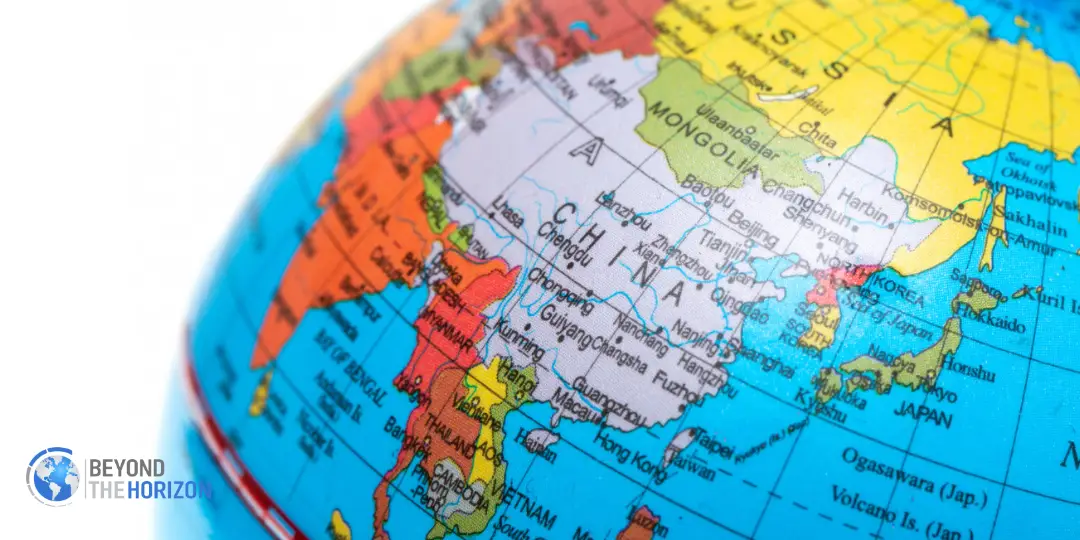Introduction
As the Asia-Pacific Economic Cooperation (APEC) summit convenes in Gyeongju, South Korea, the grand narrative is not simply about trade volumes or supply-chain maps—it is increasingly about the reconfiguration of regional alliances. At a moment when the traditional liberal trade order is under pressure, major powers and middle states alike are recalibrating who they align with, how they cooperate, and what multilateralism means in practice. The 2025 summit is thus less a forum for incremental progress and more a staging ground for alliances being tested—and re-shaped—amid intensifying U.S.–China competition, technological disruption, and evolving power balances.
U.S. Strategic Reach and the APEC 2025 Summit: Retrenchment or Realignment?
For decades, the United States played a dominant role in APEC, anchoring trade liberalization and the region’s security architecture. This year, however, Washington’s engagement looks markedly different. Although the U.S. remains formally active at APEC, with a senior official describing its participation as “very strong and robust,” President Donald Trump departed the summit early – schedules “didn’t align perfectly to allow for President Trump to stay for all of the events,” the official explained.
Trump’s early exit underlined a shift toward flexible bilateralism over multilateral frameworks. In place of the traditional U.S. leadership at APEC, Trump has favored one-on-one deals that press American advantages. At the prior ASEAN forum, for example, he blitzed through six hours of meetings and clinched four trade agreements – deals that pointedly did not lower U.S. trade barriers and even warned partners against deepening ties with unnamed “others” (a thinly veiled reference to China) on pain of new tariffs.
This go-it-alone strategy poses a two-fold challenge for the region: on one hand, some APEC members fear diminished U.S. multilateral leadership may leave a vacuum in regional order; on the other, it opens the door for those countries to hedge their bets, diversify partnerships, and pursue more flexible coalitions not necessarily bound to Washington’s agenda. Indeed, analysts note that U.S. involvement now “appears selective and conditional” compared to China’s more consistent regional presence. The question hanging over Gyeongju is whether America’s retrenchment is temporary, or a sign of longer-term realignment in how the U.S. projects power in the Asia-Pacific.
China’s Alliance Pivot: Taking Center Stage
With U.S. engagement appearing sporadic, China is moving to fill the void and reposition itself as a regional anchor. President Xi Jinping, attending the summit after Trump’s departure, seized the moment to cast Beijing as the predictable champion of free and open trade – ironically contrasting with Washington’s tariff-heavy approach. “Changes unseen in a century are accelerating across the world,” Xi told fellow leaders, invoking turbulent times as a call for deeper cooperation and a recommitment to global trade rules.
This rhetoric aligns with China’s long-term strategy: Beijing’s latest five-year plan explicitly pledges to “safeguard the multilateral trading system and promote broader international economic flows,” signaling its intent to uphold and shape the rules of trade. But China’s pivot is not just talk – it’s backed by active alliance-building. In the lead-up to APEC, Chinese Premier Li Qiang traveled to Southeast Asia and signed an upgraded ASEAN–China free trade deal, reinforcing Beijing’s economic ties in its backyard.
At the summit, Xi held high-profile bilateral meetings with U.S. allies and partners – from Canada’s Prime Minister Mark Carney to Japan’s new Premier Sanae Takaichi – aiming to mend frayed relations and expand China’s influence. For many Asia-Pacific states, closer alignment with China offers enticing economic opportunities, from expanded trade to infrastructure investment. Yet the strategic trade-off is real: deeper economic links to China may bring dependencies or tacit concessions. Regional officials remain wary of Beijing’s dominance in manufacturing and its readiness to wield trade as a weapon. For instance, China recently tightened its export controls on critical rare earth minerals, sending shockwaves through global supply chains.
In short, China’s emergence as the de facto leader at APEC comes with a dual narrative – one of partnership and multilateralism, and another of hard-nosed economic statecraft that gives smaller nations both hope and cause for caution.
Middle Powers and the Era of Flexible Coalition-Building
Amid the U.S.–China tussle, the Asia-Pacific’s middle powers – countries like South Korea, Australia, and Canada – are carving out more autonomous and nuanced paths. Rather than choosing strict sides, these states are increasingly pursuing issue-based alignments and pragmatic partnerships to safeguard their interests.
South Korea, as the 2025 APEC host, exemplified this approach by spotlighting challenges that transcend traditional geopolitical divides. President Lee Jae Myung launched the “APEC AI Initiative,” urging Pacific Rim economies to jointly harness artificial intelligence for development. In the same vein, he pressed for a regional framework to address rapidly aging populations – a “demographic crisis” shared by many societies. By steering the agenda toward technological and social issues that affect all, Seoul positioned itself as a convener of cooperation beyond old alliance blocs.
Meanwhile, Canada used the forum to signal a strategic shift in its trade orientation. Prime Minister Mark Carney bluntly declared that the rules-based free trade era of the postwar decades is over, arguing that the old system of ever-expanding liberalized trade “is gone” in today’s changing global economy. With that reality in mind, Carney announced Canada’s intent to double its exports to markets outside the United States over the next decade. This marked pivot away from over-reliance on a single ally underscores a broader trend: middle powers are hedging their bets.
They are favoring flexible coalitions centered on specific issues – from AI governance and green technology to supply-chain resilience – rather than binding themselves to any one great power. Such adaptive diplomacy reflects a deeper shift in the region’s dynamics: alliances are increasingly built on shared interests and strategic autonomy, not just ideology or history. In this new era, a country like Australia, for example, can strengthen security ties with the U.S. and Japan through the Quad and AUKUS, while simultaneously engaging China to restore trade flows – all in the pursuit of its own national interests. The APEC summit spotlighted these complex maneuvers by middle players who seek stability and prosperity on their own terms, through coalitions that are ad hoc, overlapping, and fluid.
Multi-Track Alliances: Blurring Economic and Security Lines
One key takeaway from Gyeongju is that alliances in the Asia-Pacific are no longer confined to single domains; they now span trade, technology, and security all at once. The neat separation between economic partnerships and military pacts is giving way to multi-track arrangements. A vivid example was South Korea’s bilateral summit with China during APEC. In their talks, President Lee and President Xi addressed not only commerce but also hard security issues: Lee urged Xi’s help in reining in North Korea’s nuclear program, even as the two countries inked new economic agreements including a revival of a won–yuan currency swap.
Such a meeting illustrates how countries are layering security cooperation atop economic ties, effectively merging alliance tracks that were previously distinct. At the same time, a different network of alliances is forming to safeguard critical supply chains outside of China’s orbit. The United States, Canada, Australia and other like-minded partners have been advancing a Critical Minerals Production Alliance to reduce reliance on Chinese supplies of lithium, rare earths and other vital resources. Under this coalition, G7 economies (led by Canada in this instance) committed billions to fast-track new mineral projects and signed offtake deals to ensure that crucial commodities flow to Western markets rather than being funneled through China.
This kind of supply-chain pact is effectively a strategic alliance by another name – one aimed at economic security. The result is a complex lattice of relationships: a country might join China-led trade initiatives for growth, participate in U.S.-led tech or defense groupings for security, and simultaneously collaborate in neutral forums on global issues. These overlapping alliances mean that the Asia-Pacific is not cleaving into two monolithic camps, but rather developing a mosaic of partnerships. Trade deals, tech standards cooperation, military agreements, and diplomatic forums are all interwoven. In this landscape, former rivals can become partners on one issue while remaining opponents on another, blurring the lines between friend and foe in pursuit of pragmatic interests.
Conclusion
The 2025 APEC Summit is shaping up as a pivotal moment for regional alliances in the Asia-Pacific. With U.S. multilateral leadership stepping back and China stepping forward more assertively, the region is not sliding into a new Cold War of binary blocs so much as entering a phase of strategic complexity and realignment.
Middle powers are asserting greater agency through flexible, interest-based coalitions; major powers are re-defining how they wield influence, mixing cooperation with rivalry; and multilateral venues like APEC are becoming arenas for experimenting with new forms of partnership. The future of the Asia-Pacific will likely not be dictated by any single hegemon, but by a constantly shifting balance – a pattern of alliances built, dissolved or repurposed as national interests evolve.
For observers of the region, the key question is not simply “Who is leading?” but rather “How are alliances being reshaped?” The Gyeongju summit revealed a 21st-century regional order in flux, one where economic and security interests intersect and where countries large and small are testing ways to navigate an era of uncertainty. In the end, the measure of success for APEC and similar forums may lie in their ability to accommodate this fluid mosaic of alliances – and to help chart a cooperative path forward amid the ever-changing currents of Asia-Pacific geopolitics.





